Wodzisław Śląski-Silesian 作者: 来源: 发布时间:2021-10-27
Ⅰ. Population and Area
Population (2019-06-30)
• City 47,992
• Density 970/km2 (2,500/sq mi)
• Metro 650,000
Area
• City 49.62 km2 (19.16 sq mi)
Website https://www.wodzislaw-slaski.pl/
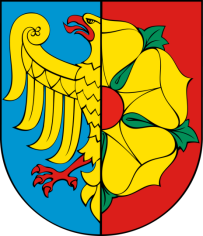
Ⅱ.Natural Geography (environment and resources)
-Location
-Wodzisław Śląski is an urban in the south-eastern part of Upper Silesia, now in Silesian Voivodeship in south Poland, within the south portion of the Upper Silesian Coal Basin. It borders the towns of Pszów, Radlin and villages Marklowice, Mszana, Godów, Gorzyce and Lubomia. It lies between the Vistula and Oder rivers, near Czech border in the foreground Moravian Gate. Several rivers flow through the city, the major two being the Leśnica and "Zawadka" rivers. Within 600 km (373 mi) of Wodzisław Śląski are the capital cities of six countries: Berlin, Vienna, Prague, Bratislava, Budapest and Warsaw.
-Climate
-The climate of the area is continental humid. The average temperature is 8 °C (46 °F) (average −1.7 °C (28.9 °F) in January and up to average 17.7 °C (63.9 °F) in July). Yearly rainfall averages at 786 mm (30.94 in), the rainiest month being July. The area's characteristic weak and medium winds blow at about 4 m/s from the south-west (Moravian Gate).
-Districts
-The town is divided into 9 districts that have its own administrative body:
-Jedłownik Osiedle
-Jedłownik-Turzyczka-Karkoszka
-Kokoszyce
-Nowe Miasto (new city)
-Osiedla XXX-lecia – Piastów – Dąbrówki
-Radlin II
-Stare Miasto (old city)
-Wilchwy
-Zawada
-Transport
-Wodzisław Śląski is situated at the junction of several major lines of road, railway and air communication. Only 5 km (3 mi) from center the town crossing motorway A1. The town is crossed by one national road ( "DK78" ) and tree regional roads running from Gliwice to Ostrava and regional roads from Żory and Jastrzębie Zdrój to Racibórz ( "DW932", "DW933", "DW936" ). The railway junction at "Wodzisław Śląski" is a major transshipment point.
-The town is very well connected to three international airports: Katowice – Pyrzowice (about 80 km (50 mi) away), Kraków – Balice (about 100 km (62 mi) away) and Ostrava – Mosnov (about 45 km (28 mi) away).
-Wodzisław Śląski, as the southern gate of Poland, is a good place for business development. It is the first large city located on the National Road No. 78, connecting the Czech Republic with Poland through the border crossing in Chałupki. Road No. 78 is a direct connection with the Upper Silesian Industrial District and the Czech city of Ostrava with a population of 300,000. residents.
-There are also three voivodeship roads running through Wodzisław : DW 932, DW 933, and DW 936.
-Wodzisław Śląski is located in the immediate vicinity of the A1 motorway, and there are three motorway junctions within a dozen or so kilometers from the city: in Mszana (5 km), Świerklany (9 km ) and Gorzyczki (7 km). Thanks to this, you can reach the A1 and A4 motorway junction in Sośnica in a very short time.
-It is just an hour's drive to Katowice, which is the center of the Upper Silesian Industrial District, regardless of the route chosen.
-As a result, Wodzisław Śląski has great potential and logistic potential.
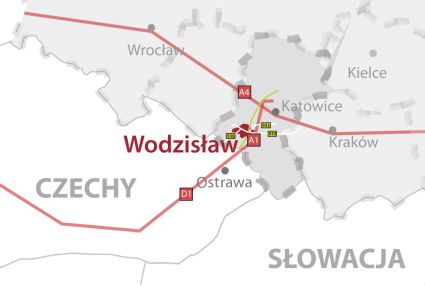
Air transport
-Wodzisław Śląski has quick and convenient access to three airports:
-GTL Katowice Pyrzowice International Airport - 90 km,
-Krakow Balice International Airport - 130 km,
-Ostrava Mošnov International Airport - 45 km.
-All these airports handle both passenger and cargo traffic.
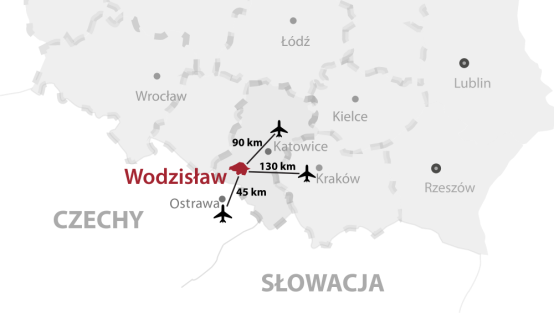
Railway transport
The transport network of Wodzisław Śląski is complemented by railway lines. The fully electrified railway line no. 158 runs through the city. It is used for cargo and passenger transport of regional and international importance.
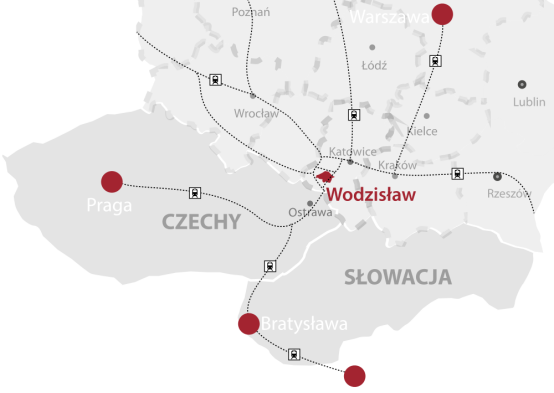
Ⅲ.Economy
-The city in numbers
-Total area: 49.51 square kilometers
-Area of districts:
-Jedłownik Housing estate 68.02 ha
-XXX-lecia housing estate, Piastów, Dąbrówki 98.54 ha
-New Town 250.53 ha
-Zawada 427.50 ha
-Old Town 552.73 ha
-Jedłownik, Turzyczka, Karkoszka 598.96 km
-Kokoszyce 804.14 ha
-Radlin II 987.22 ha
-Wilchwy 1162.83 ha
-Number of monuments in the city: 153
-Population: 48,143 (GUS 2018)
-Working age population: 28,977
-City in numbers - Wodzisław Śląski https://wodzislaw-slaski.pl/miasto-w-liczbach
-Wodzisław Śląski is center and capital of the Wodzisław County. City is situated on the main highway from nord Poland to south Poland and border with Czech Republic.
-Coal centre
-Wodzisław Śląski is a medium coal and industrial centre. Although there is no coal mines in the town (1 Maja Coal Mine closed in 2001), there are a few in its neighborhood (Radlin – Marcel Coal Mine, Pszów, Rydułtowy – Rydułtowy-Anna Coal Mine, Jastrzębie – Jas-Mos Coal Mine) and a coke manufacture in Radlin.
-Wodzisław Śląski - Wikipedia https://en.wikipedia.org/wiki/Wodzis%C5%82aw_%C5%9Al%C4%85ski#Economy
-Wodzisław Śląski is a city that draws on the industrial traditions of Silesia and at the same time uses development opportunities in the field of modern technologies. It is an investor-friendly city that meets the needs of both Polish and foreign businesses. It manifests itself, inter alia, in the care of local authorities to ensure that Wodzisław Śląskie is characterized by a very high degree of coverage with the spatial development plan. Currently, the city boasts one of the highest such rates in Poland - 95 percent. This allows you to plan and implement investments without any problems.
-Its inhabitants are an undeniable investment asset of Wodzisław Śląski. They are resilient, resourceful people who take advantage of the development opportunities. It is also worth noting that as much as over 60 percent. inhabitants of Wodzisław Śląski is of working age.
-Simultaneously with the economic development, the attention of the authorities of Wodzisław Śląski does not escape the need to take care of other spheres of life. It includes o creating opportunities for attractive leisure time activities so that companies investing in the city can present an attractive offer to employees - both at lower level and managerial staff.
-All this and many other factors make Wodzisław Śląski a significant - and increasingly important - economic center of the Silesian region.
-About Wodzisław Śląski http://investin.wodzislaw-slaski.pl/pl/o-wodzislawiu-slaskim.html
Ⅳ.Industrial Characteristics
-Characteristics of Wodzisław Śląski
-The city is a modern industrial and service center, the leader of the local economy.
-For several years, the high technology sector has been developing dynamically here, which facilitated the establishment of the Silesian Technopoly Cluster.
-- In Wodzisław Śląski, a large group of companies in the broadly understood electromechanical industry is developing rapidly. Moreover, the city is in close proximity to several industrial districts.
-More than 230 ha of real estate is prepared for investments.
-For years, tax reliefs and other financial solutions aimed at entrepreneurs have been operating in Wodzisław Śląski.
-Wodzisław Śląski is located in the immediate vicinity of Katowice - the scientific and business center of the Silesian Voivodeship.
-High tech industries have the greatest development opportunities in the city. Among other things, for this purpose, in 2014 the Technopolia Śląska Cluster was established, the aim of which is to work for the development of the Hi-Tech industry in the region. Companies from the broadly understood electromechanical industry are also predestined.
-Why is it worth investing here! http://investin.wodzislaw-slaski.pl/pl/dlaczego-warto-tu-inwestowac.html
-Key projects
-1. Renovation of the OSP Radlin II building
-Renovation works related to the modernization of the building of the Radlin II Volunteer Fire Department are in progress. Although the renovation is still ongoing, the building has changed dramatically and is already pleasing the eye of Wodzisław residents.
-Investments - News - Wodzisław Śląski https://wodzislaw-slaski.pl/aktualnosci/inwestycje
-2. The renovation of Ignacego Daszyńskiego Street is underway
-Renovation works have started on Ignacego Daszyńskiego Street. These works include the replacement of the existing paving stone surface with a cobblestone surface along with a two-sided curb replacement.
-Investments - News - Wodzisław Śląski https://wodzislaw-slaski.pl/aktualnosci/inwestycje
Ⅴ.Attrations and Cityscape
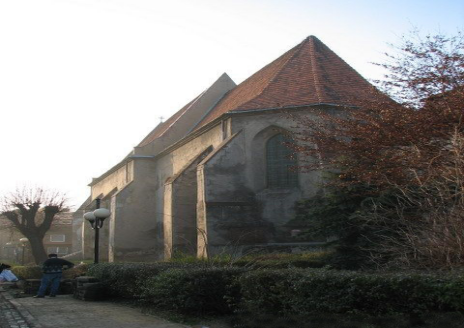
Medieval Minorite Church now Evangelical Church dedicated to the Holy Trinity (pol. Kościół św. Trójcy)

Fountain at the market square
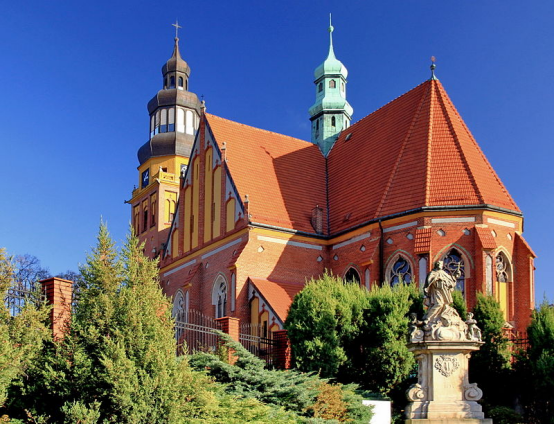
Church of the Assumption
-In contrast to the central part of the Upper Silesian industry area, located a short distance to the north, Wodzisław enjoys the reputation of a "green" city having a relatively clean environment. While the city is no centre of tourism, it does have various interesting sights and opportunities for recreation. The Beskidy Mountains, a popular recreational area for skiing, are within one-hour drive also 10 km (6 mi) from town along the Odra river are interesting natural reserve and at summer places for swimming.
-Sights
-The medieval gothic church, dedicated to the Holy Trinity (pol. Kościół św. Trójcy), erected in 1257;
-The Monastery from 17th century ( "Klasztor franciszkański" ), erected in 1257;
-The neo-gothic church of "Assumption of St. Mary" (Kościół WNMP),
-The building of the former district authority (19th century),
-The neo-classical Wall tower ("Baszta rycerska"),
-The Classicist Palace oldest in Poland from 1745. (Today Museum),
-The old town square (Rynek),
-The Palace in Kokoszyce (Pałac w Kokoszycach), built in 1823,
-The Synagogue (Synagoga) from 1826 ( today "Rosmann")
-The Balaton small lake in the forest (Grodzisko)
Ⅵ.History and Culture
-Being a borderland town, Wodzisław Śląski is a centre of the Wodzisław County, formed during a historical process lasting many centuries. Rich excavations the oldest finds dated back to the stone Age give evidence about its ancient inhabitants.
-Middle Ages
-Medieval Minorite Church now Evangelical Church dedicated to the Holy Trinity (pol. Kościół św. Trójcy)
-Loslau in 1874
-The city's name derives from the Piast Duke Władysław of Opole. He located the city and established the Wodzisław monastery about 1257.
-The city's origins can be traced back into the 10th and 11th century, when three Slavic settlements existed on Wodzisław's present-day territory which eventually merged to form one town. In the course of the medieval eastward migration of Flemish and German settlers (Ostsiedlung), Wodzisław, as many other Polish settlements, was incorporated (granted city status and right) according to the so-called Magdeburg Law at some point before 1257 (the exact date remains unknown).This, however, is not to be confused with a change in national affiliation; Wodzisław continued to be part of the Kingdom of Poland, until Silesia as a whole became a fiefdom of the Bohemian crown in 1327. At that times of Duchess Constance, the town developed fast. Wodzisław was one of the most populated and richest towns of Upper Silesia. In 14 and 15th century the city continued to grow and developed into a regional trade centre. In the 15th century, the Hussites devastated the city. From 1526, Bohemia, including the fiefdom of Silesia, which Wodzisław was a part of, came under the authority of the Habsburg crown.
-Early Modern Age
-In 16th and 17th century and during the time of the Thirty Years' War, Wodzisław been part of the Habsburg Empire. After the end of the Thirty Years' War Wodzisław was destroyed. Never back to Middle Ages' "golden time". At the beginning of the War of the Austrian Succession between King Frederick II of Prussia (the Great) and the Habsburg empress Maria Theresa of Austria, the greatest part of Silesia, including Wodzisław, was annexed by the Kingdom of Prussia in 1740, which Austria eventually recognized in 1763. In 1815 the city became part of the Prussian Province of Silesia. Coal mining gained importance for Wodzisław's economy as early as the 19th century.
-20th century
-After the end of World War I in 1918, Polish statehood was restored. Amidst an atmosphere of ethnic unrest, a referendum was organized to determine the future national affiliation of Upper Silesia. Although an overall majority had opted for Germany, the area was divided in an attempt to satisfy both parties. Although both parties considered the territory they were assigned insufficient, the division was justified insofar as in the German and Polish parts a majority had voted in favour of the respective nation.
-The lowest amount of pro-German votes (nevertheless still 49% of the total) was registered in the districts of Rybnik and Pszczyna (Pless). The city and the largest part of the district of Rybnik were attached to the territory of the Second Polish Republic; Wodzisław thus became part of a Polish state for the first time since 1335 when Poland had ceded Silesia to Bohemia in the Treaty of Trentschin. The Upper Silesia plebiscite and eventual division of Upper Silesia were accompanied by three Silesian Uprisings of Polish milicians.
-Within the Second Polish Republic of the interwar period, Wodzisław was part of the Silesian Voivodeship, which enjoyed far-reaching political and financial autonomy.
-With the outbreak of World War II in 1939, the border city Wodzisław returned under the rule of Germany, being in the part of Poland that was directly incorporated into the German state. The population was ethnically categorized and either "re-Germanized" or disfranchised and partially deported into the General Government as Poles.
-On 22 January 1945 a death march from Nazi German's death camp Auschwitz, 35 mi (56 km) away, ended in Wodzisław Śląski, where the prisoners were put on freight trains to other camps. When the Soviet army advanced on Poland, nine days before the Soviets arrived, the Schutzstaffel had marched 60,000 prisoners out of the camp. Approximately 15,000 prisoners died on the way. There is a memorial to the victims of the Holocaust from Wodzisław in the Baron Hirsch Cemetery Staten Island, New York where the Wodzisław landsmanshaft has a section.
-In March 1945 the Soviet army arrived near Wodzisław. Approximately 80% of the town was destroyed in World War II. From 26 March 1945 Wodzisław was once more integrated into Poland. The Old Town, including the Market Square, was fully restored after the war.
Ⅶ.Other Information
-Wodzisław Śląski is a town in Silesian Voivodeship, southern Poland with 47,992 inhabitants (2019). It is the seat of Wodzisław County.
-It was previously in Katowice Voivodeship (1975–1998); close to the border with the Czech Republic, about 290 kilometres (180 miles) south of Warsaw and about 100 kilometres (62 miles) west of Kraków, on the southern outskirts of the metropolitan area known as the Upper Silesian Coal Basin.
Ⅷ.Contact Information
Mayor Mieczysław Kieca
www.wodzislaw-slaski.pl
The official websiteof the City Hall of Wodzisław Śląski 44-300 Wodzisław Śląskiul. Bogumińska 4
Tel. 32 45 90 460
E-mail: kancelaria@wodzislaw-slaski.pl
Monday - Wednesday - 7:30 - 16:00
Thursday - 7:30 - 17:00
Friday - 7:30 - 13:00
Saturday (only USC) - 7:30 - 13:3
